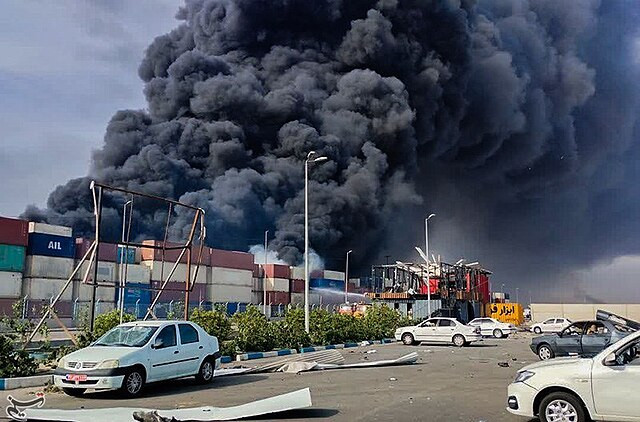Iranian officials said Monday that a "failure to observe safety principles" led to a massive explosion at the Shahid Rajaei port near Bandar Abbas that killed at least 70 people and injured more than 1,000, according to state media.
Authorities stated that further technical and laboratory testing is required to determine the precise cause of the blast. Surveillance footage distributed by the Fars news agency showed a small fire starting among containers before a devastating explosion engulfed the area. Eyewitnesses reported seeing chemicals catch fire, fueling the larger blast.
Pir Hossein Kolivand, head of Iran's Red Crescent Society, said 190 of the injured remain hospitalized. Interior Minister Eskandar Momeni told semi-official Tasnim news, "Safety precautions and passive defenses were not implemented or taken seriously at the port," adding that while the fire was under control, "there are certain containers that just need to burn off, but they are controlled and monitored."
The explosion devastated nearby infrastructure, disintegrating buildings and creating craters up to 165 feet wide, according to satellite images analyzed by The Associated Press. The fire burned for two days before authorities announced it had been fully extinguished.
Iran's Customs Administration blamed the disaster on a "stockpile of hazardous goods and chemical materials stored in the port area," according to the Islamic Republic News Agency. However, officials have denied that any military materials were involved. Ebrahim Rezaei, spokesman for the Iranian parliament's national security and foreign policy committee, posted on X that the explosion had "nothing to do with Iran's defense sector."
CNN previously reported that hundreds of tons of sodium perchlorate, a chemical used in solid missile fuel, had been delivered to Bandar Abbas in February and March. The New York Times also cited a source tied to the Islamic Revolutionary Guard Corps who claimed the material that exploded was sodium perchlorate.
Chemical experts offered differing interpretations. Andrea Sella, a professor of chemistry at University College London, said, "This bears the hallmarks of an ammonium nitrate explosion," pointing to the fierce burning and subsequent detonation. Chemical weapons expert Dan Kaszeta told CNN that sodium perchlorate "could provide an explanation for how the explosion started, as perchlorates are used in materials like rocket propellant and fireworks."
Iranian President Masoud Pezeshkian traveled to Bandar Abbas on Sunday to oversee relief efforts and meet with victims. "We have to find out why it happened," Pezeshkian said during a televised meeting with officials.
Some discrepancies have emerged regarding cargo documentation at the port. Saeed Jafari, CEO of a marine services company operating there, said to ILNA, "The incident happened following a false statement about the dangerous goods and delivering it without documents and tags."
Semi-official ISNA reported that the cargo responsible for the explosion was not properly declared to customs authorities. Private security firm Ambrey noted that the port received ammonium perchlorate shipments earlier this year, reportedly to replenish Iran's missile stockpiles, although Iranian military officials denied receiving such materials.






